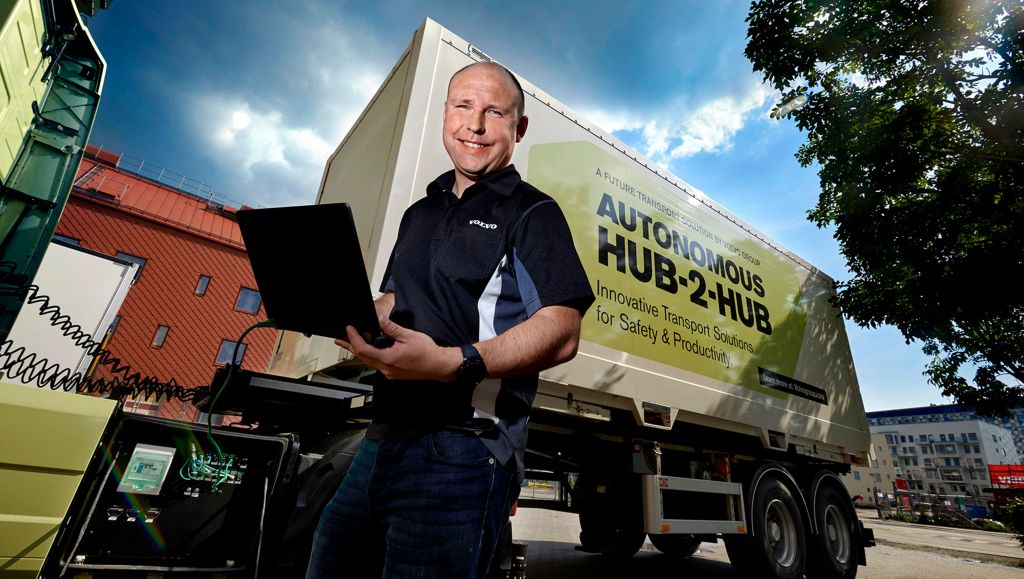Volvo drives the development of automation forward


Robert Laxing has always enjoyed testing out new technology. Ever since he investigated his stereo’s speakers as a little boy he has been fascinated by trying to come up with new solutions and testing out whether they work.
Working at the Concept Vehicle Lab in Gothenburg, one of the Volvo Group’s research labs, suits him down to the ground. He is responsible for a team of five that builds, checks and tests the vehicles of the future. At the moment, the focus is on self-driving, autonomous vehicles.
The team is primarily focused on trucks, but since the technology has been developed for both buses and construction equipment, these are also tested in the lab. Some examples of truck projects that the team has concluded include a self-driving mining truck, a self-driving refuse truck and, most recently, a truck that drives from one hub to another. More projects are on their way.
“At the moment we’re working on a lot of projects for future generations,” he says, pointing out the large testing hall.
Robert and his team are involved with the trucks all the way to their launch and various press events. These include the Volvo Group’s “Innovation Summits”, where the media, politicians and public authorities have been invited to Brussels, London and most recently Beijing, in order to discuss the vehicles and transportation of the future. He tells us of the pride he feels when people gather around the trucks.
“It’s a wonderful feeling to be involved in such important development and see the appreciation for all the work that we’ve done. In this way we’re also demonstrating that the Volvo Group is both a driving force and at the cutting edge when it comes to the technology around self-driving vehicles.”
Development moves fast within automation, and Robert believes there are few limits on it from a technical point of view.
“Nothing is actually impossible. But what’s important, and what we work intensively on, is developing and refining safety and ensuring that there are multiple back-up systems that give warnings about different situations,” he reveals.
The trucks come straight from the factory in Tuve, Sweden. Robert and his team work closely with the suppliers to develop the best systems.
“We have to make quick decisions. A little outside the box sometimes. This is new territory, after all. We work close to the product and test our findings directly on it. It’s fun and inspirational at the same time,” he explains.
Robert will be changing focus soon. From concentrating on building self-driving vehicles he will soon be working on carrying out testing.
“Testing new technology has always been special to me and now it’s going to be exhilarating to get to head up this work,” he says.
The tests are based around a variety of situations in which the systems are subjected to external influences in order to increase the safety level. Examples include testing how the truck and the warning system react if a cyclist crosses the carriageway or if someone suddenly runs out in front of the truck.
“The challenge is to make simulations that are as realistic as possible,” he explains.
Robert believes that the public perception of automation has changed. When he and his team began working on automation a little over eight years ago, things looked very different. At that stage, the vehicles were tested in the evenings and at weekends because it was seen as a little bit too controversial to put it on show.
“It all felt a bit sci-fi. But now it’s accepted in a completely different way. The usefulness of the technology in places like mines and ports gets highlighted. Self-driving vehicles are an important complement to the work that goes on there. They save time and money, while also reducing emissions,” he concludes.
Watch the video with Hub2Hub , the mining truck and the refuse truck.